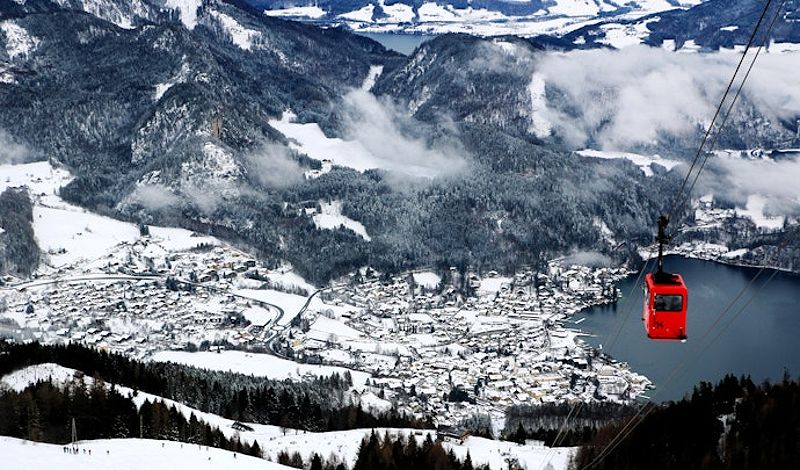Unveiling The Best Time To Travel To Ireland And Scotland: A Comprehensive Guide For International Tourists
Contrary to popular belief, the best time to visit Ireland and Scotland isn’t always summer. While the warmest temperatures occur from June to August, this peak season brings hordes of tourists and sky-high costs. Spring and autumn offer a more affordable and less crowded alternative, with surprisingly agreeable weather. Understanding the best time to travel to Ireland and Scotland is essential for maximizing your experience and enjoying everything these enchanting countries have to offer.
The Best Time to Travel to Ireland and Scotland for Sightseeing
Spring (April-May): A Blooming Delight
Spring is a magical time to visit Ireland and Scotland, as nature awakens from its winter slumber. The months of April and May bring a gentle warmth, with average high temperatures ranging from 10°C to 15°C in many areas (though rainfall should be factored into plans, averaging 63mm in Dublin and 58mm in Edinburgh). Bluebells carpet the ancient woodland floors of Glendalough, while vibrant rhododendrons burst into bloom at the Royal Botanic Garden Edinburgh. This vibrant tapestry of color paints a breathtaking backdrop for exploring the stunning landscapes. However, the unpredictable nature of spring weather should be considered; showers are common.
One of the highlights of visiting during spring is the opportunity to experience the local culture without the overwhelming crowds. Popular tourist destinations are less congested, allowing you to enjoy a more relaxed pace. Additionally, many accommodations offer lower rates during this shoulder season, making it an excellent time for budget-conscious travelers.
Summer (June-August): The Peak Season
Summer is undeniably the peak tourist season in both Ireland and Scotland. From June to August, temperatures soar, reaching an average high of around 20°C. The longer daylight hours provide ample time for outdoor exploration, whether you’re hiking through the Scottish Highlands or enjoying the lively atmosphere of vibrant festivals.
However, with the influx of tourists comes some drawbacks. Popular attractions can become crowded, and prices for accommodations and flights tend to skyrocket. During the peak summer months, travelers can expect to pay an average of €200 per night for a hotel room in Dublin and £150 per night in Edinburgh, compared to the shoulder seasons when rates are typically 20-30% lower. To navigate this peak season successfully, it’s essential to plan your itinerary well in advance. Consider booking accommodations and major attractions ahead of time to secure the best rates and avoid disappointment.
One of the most exciting aspects of summer travel is the plethora of festivals and events that take place. From the Edinburgh Festival Fringe, the largest arts festival in the world with over 50,000 performances, to the Galway International Arts Festival featuring renowned artists and musicians, summer is alive with cultural experiences. Enjoy street performances, music, and art exhibitions that showcase the rich heritage of both countries.
Autumn (September-October): A Stunning Shoulder Season
As summer fades, autumn emerges, presenting a captivating transformation in Ireland and Scotland. The months of September and October offer pleasant weather, with temperatures ranging from 10°C to 15°C. The fall foliage creates a picturesque landscape, especially in regions like Killarney National Park and the Cairngorms National Park. This stunning backdrop makes autumn one of the best times to travel to Scotland and Ireland for photography enthusiasts and nature lovers alike.
In addition to the breathtaking scenery, autumn also brings fewer crowds, allowing for a more peaceful experience at popular sites. Many travelers choose to visit during this time to enjoy the tranquility and the opportunity to connect with locals. Additionally, accommodations may offer discounted rates, making it a budget-friendly option for those looking to explore without breaking the bank.
Winter (November-March): A Unique Charm and Cozy Atmosphere
Winter in Ireland and Scotland offers a completely different experience, one that is filled with charm and coziness. Although temperatures often dip below 10°C, the low season provides a unique opportunity to immerse yourself in local culture. With fewer tourists, you can explore charming villages and historic sites without the hustle and bustle.
One of the highlights of winter travel is the festive atmosphere that envelops both countries during the holiday season. Traditional Christmas markets spring up in cities like Dublin and Edinburgh, offering unique gifts, local crafts, and seasonal treats. You can also enjoy local customs and traditions, such as festive music performances and holiday-themed events.
For those adventurous enough, winter also provides the chance to witness the Northern Lights in certain regions of Scotland. The dark winter nights create optimal conditions for this breathtaking natural phenomenon, particularly in the northern parts of the country.

Tailoring Your Trip: Recommendations for Different Travel Styles
Couples and Honeymooners
For couples and honeymooners, the shoulder seasons of spring and autumn present the most romantic backdrop for a getaway. The mild weather, reduced crowds, and stunning natural beauty create an intimate atmosphere that is perfect for bonding. Imagine strolling hand-in-hand through the charming streets of Kinsale in Ireland or enjoying a sunset on the Isle of Skye in Scotland.
Consider indulging in unique experiences tailored for couples, such as private tours of historic castles, wine tastings at local vineyards, or romantic dinners at cozy restaurants featuring traditional cuisine. The picturesque landscapes and charming towns provide ample opportunities for memorable photo ops to capture your love story.

Families with Children
When traveling with children, summer is an excellent choice for visiting Ireland and Scotland. The longer daylight hours and warmer temperatures make it easier to engage in outdoor activities. From exploring interactive museums like Titanic Belfast to hiking in Glenveagh National Park, families can create lasting memories filled with adventure.
Many attractions cater specifically to families, offering activities that engage children and keep them entertained. Look for family-friendly events and festivals that feature live performances, workshops, and hands-on experiences. These activities provide a fun and educational way to explore the rich cultural heritage of both countries.
Senior Citizens
For senior travelers, the spring and autumn seasons are ideal for enjoying a comfortable and leisurely experience. The moderate temperatures and smaller crowds make it easier to navigate popular attractions and enjoy scenic drives. Consider exploring historic cities like Dublin and Edinburgh, where you can immerse yourself in the rich history and culture at a relaxed pace.
Additionally, many accommodations and tours offer special services and amenities for senior travelers, ensuring a comfortable experience. Whether you’re interested in guided tours or self-exploration, there are plenty of options to suit your needs.
Celebrating the Rich Cultural Heritage: Top Events and Festivals
Throughout the year, Ireland and Scotland play host to a variety of vibrant events and festivals that celebrate their rich cultural heritage. Some of the highlights include:
St- Patrick’s Day (March)
Celebrated with parades, music, and festivities across Ireland and Scotland, St. Patrick’s Day is a must-experience event for visitors. Cities come alive with green decorations, traditional Irish music, and dance performances, creating an electric atmosphere that invites everyone to join in the fun.
Edinburgh Festival Fringe (August 5-29)
The world’s largest arts festival, featuring over 50,000 performances of theater, comedy, music, and more, the Edinburgh Festival Fringe is a truly remarkable spectacle. With thousands of performances taking place across the city, there’s something for everyone, making it an unforgettable experience for art lovers and casual visitors alike.
Celtic Connections (January 19 – February 5)
This renowned music festival in Glasgow showcases traditional and contemporary Celtic music, providing an immersive cultural experience. With performances from local and international artists, this festival is a must-visit for music enthusiasts.
Galway International Arts Festival (July 11-24)
A celebration of the arts, including visual arts, theater, and music, in the lively city of Galway, Ireland. This festival attracts artists and performers from around the world, creating a vibrant atmosphere that captivates audiences.
Kilkenny Arts Festival (August 4-14)
A multi-disciplinary arts festival in the historic city of Kilkenny, Ireland, showcasing a diverse range of artistic expression. Visitors can enjoy exhibitions, performances, and workshops that highlight the talents of local and international artists.
Practical Tips for Planning Your Trip to Ireland and Scotland
When planning your trip to Ireland and Scotland, there are several practical factors to consider to ensure a smooth and enjoyable experience.
Transportation Options
Transportation options include public transport (buses, trains, and ferries), as well as car rentals, which allow for greater flexibility in exploring the countries’ remote and scenic regions. While public transport is reliable and connects major cities, renting a car can provide the freedom to explore off-the-beaten-path destinations at your own pace. Train fares between Dublin and Galway typically range from €15 to €25 one-way, while a similar journey by car would cost around €30 in fuel, plus rental fees.
Accommodation Choices
Accommodation choices range from hotels and bed-and-breakfasts to hostels and vacation rentals, with prices varying based on location and season. Generally, you can expect to pay more during the peak summer months, with an average hotel room in Dublin costing around €200 per night and in Edinburgh around £150 per night. Booking accommodations well in advance is advisable, especially if you’re traveling during popular festivals or peak tourist seasons.
Budgeting for Your Adventure
Budgeting for your trip is crucial, as the cost of travel in Ireland and Scotland can vary widely depending on your travel style. As a general guideline, you should plan to spend between $100 and $200 per person per day, excluding flights. This budget should account for accommodations, meals, activities, and transportation.
Visa and Passport Requirements
Regarding visa and passport requirements, be sure to check the latest regulations for your country of origin, as the rules may change over time. It’s essential to ensure you have all necessary documents in order to avoid any travel issues.
Frequently Asked Questions
Q: What’s the best month for hiking in the Scottish Highlands?
A: The summer months of June to August offer the best weather for hiking in the Scottish Highlands, with longer daylight hours and milder temperatures. However, September can also be a pleasant time to explore the region with fewer crowds.
Q: Are there any off-season benefits to visiting Ireland?
A: Yes, traveling to Ireland during the off-season (late autumn, winter, and early spring) can offer several benefits. You’ll encounter fewer crowds, more affordable accommodations, and the opportunity to immerse yourself in the local culture by attending festive events and visiting traditional pubs.
Q: How much should I budget for a week-long trip to Ireland and Scotland?
A: The budget for a week-long trip to Ireland and Scotland can vary significantly depending on your travel style and preferences. As a general guideline, you can expect to spend between $1,500 and $3,000 per person, including flights, accommodations, transportation, and activities.
Q: Is it easy to travel between Ireland and Scotland?
A: Yes, traveling between Ireland and Scotland is convenient, with various ferries and flights connecting the two countries. Many travelers choose to combine a visit to both destinations for a more diverse experience.
Conclusion: Unlock the Secrets to Planning Your Perfect Ireland and Scotland Adventure
Whether you’re drawn to the enchanting landscapes, rich cultural heritage, or vibrant events and festivals, Ireland and Scotland offer an unforgettable travel experience. By considering the best time to visit based on your preferences and travel style, you can maximize your enjoyment and create lasting memories in these remarkable destinations. So why wait? Start planning your journey to Ireland and Scotland today! From the lush greenery of spring to the festive spirit of winter, each season offers unique opportunities for exploration and adventure. Embrace the magic of these beautiful countries, and let your travel tales unfold!
MORE FROM hotsavingsradar.com













